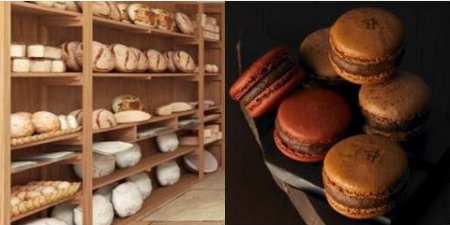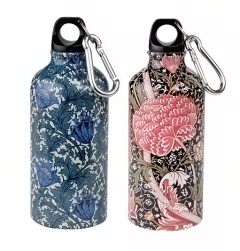Still occasionally screaming for ice cream? A surprising recipe offers a new reason to indulge.

Got buttermilk!
Buttermilk always reminds me of the pioneer stories I read obsessively as a girl, so I’m forever tearing out magazine recipes featuring the old-fashioned-seeming drink. Buttermilk-cardamom pie! Buttermilk and lemon curd cake! Buttermilk fried chicken! No buttermilk mention is too small to warrant my immediate attention. One case that actually made it from “Oh, that looks interesting!” to “Gee, your ice cream tastes terrific!” is an incredibly simple recipe for iced buttermilk.
A couple of summers ago, I began an ice cream quest. It’s sort of like a tundra-based vision quest. Instead of wandering in the desert, you eat ice cream. You can see the similarities already, I presume. I invested in one of those no-muss, automatic ice cream makers that comes with a bowl you stash in the freezer and started trying recipes.
The recipe in question is courtesy of Emeril Lagasse and contains only sugar, lemon juice & zest, a pinch of salt and buttermilk. His recipe calls for lots of sugar, but I reduced it with tasty results. (You can see the recipe below, or click through for the original on the Food Network site, complete with a cake that he serves along with it.)
The kicker is that since buttermilk is cultured, it has the same health benefits of yogurt. Since the buttermilk is so creamy, the texture feels much fuller than other low-fat ice creams. And thanks to the tang, the taste is similar to that addictive-to-many Pinkberry frozen yogurt.
If you really want to commit to your ice cream experiments (that sounds downright scientific – it’s like summer school, really), try David Lebovitz’s The Perfect Scoop. My favorite recipe in the book is Guinness-Milk Chocolate Ice Cream. I’ve also had fun convincing my friends to try his concoctions of Olive Oil Ice Cream and Goat Cheese Ice Cream.
But seriously, try the buttermilk. It does an ice cream quest good.
Emeril’s recipe on Food Network site (scroll past the cake for the ice milk)
The Perfect Scoop, $16.47
Ice cream maker, $49
Emeril’s Buttermilk Ice Milk (Food Network)
1 1/2 cups superfine sugar (Note: I reduced this amount.)
1/4 cup plus 2 tablespoons lemon juice
1 teaspoon lemon zest
Pinch salt
3 cups buttermilk
In a large non-reactive bowl combine sugar, lemon juice, zest, salt and buttermilk and stir until the sugar is dissolved. Cover with plastic wrap and transfer to the refrigerator until thoroughly chilled, about 1 hour. (Note: I never bother to chill it since I’m not a purist and the buttermilk is already cold.) Process in an ice cream maker according to manufacturer’s instructions. Yield: about 1 quart






